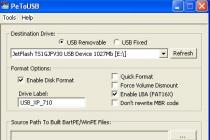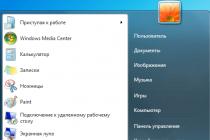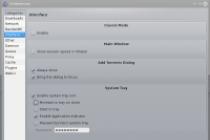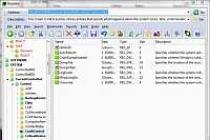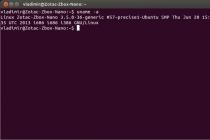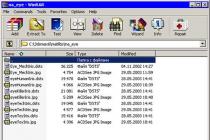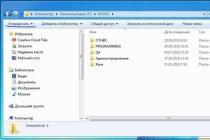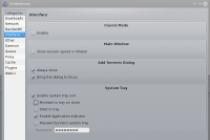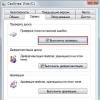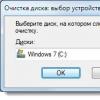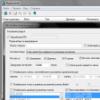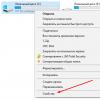Let's first understand the difference between these two formats:
- XLS is a file format created in Microsoft Excel. It was used up to Excel versions 2003. The format is outdated and does not support many of the features of modern Excel;
- XLSX- updated version Excel file format, it appeared along with the package Microsoft Office 2007.
Currently, Excel since version 2007 can open both XLSX and XLS files. Excel version 2003 and below, by default, can only work with XLS files.
How to open an XLSX file in Excel 2003 (or older)
There are three main ways, we will consider them in order of priority.
Install the service pack for your version of Office. This method is the most correct, because once you install the update, you can easily open XLSX files in your old Excel. You can download the package absolutely free of charge and without registration on the official Microsoft website.
Resaving a file in Excel 2007 or higher. Suitable if you rarely need to open such files and if you have another computer with a relatively new version of Office on hand. To change the file format from XLSX to XLS, open it in a new version of Excel and go to the menu "File" -> "Save As":
In the File Type field, select Excel 97-2003 Workbook (*.xls)) and click Save. Please note that functionality may be partially lost:

Use of Third Party Online Services. You can easily find websites on the Internet where automatic mode you can change the file format. For example, you can use Google service Docs.
If you have any questions - or write in the comments to this question, we are always happy to help you!
Hello friends! Today I will share with you the secret of how to open an xlsx file, but first, let's get acquainted with what kind of file format it is. So, the xlsx file is an ordinary Excel spreadsheet document, but not in the 2003 version, but in 2007. It has become a replacement for the xls format familiar to many users. Just like the docx file replaced the 2003 doc version. All changes are associated with the release of a new office suite Microsoft office 2007.
I think that the appointment of electronic Excel tables everybody knows. They are used for miscalculations, determining dynamics, calculating formulas, etc. While Word is used as a typing and editing of texts. Such extension changes brought a lot of inconvenience to users. After all, those who had the version of Excel 2003 installed did not have access to documents in the xlsx format.

Imagine if this is an important work document that needs to be completed immediately. In general, there are many nuances. And of course, it was beneficial for Microsoft to have users install a new paid version Microsoft Office, therefore, did not pay due attention to this problem. But today I will try to help you in this matter.
If on your PC working version Office 2003 or XP, then to open the xlsx file, you will need to download the xlsx file converter. By the way, it's perfect for docx files and pptx. Before starting the converter, you need to close all open programs. And now you can run the converter. For it to work successfully, you need to take license agreement and check the corresponding box. Then click on the " Accept".

It will take a few minutes and after the installation is complete, click "OK". If unclosed programs interfere with the installation, the installer will warn you with a pop-up window.
The converter program will help in solving the problem of how to open xlsx file . Once the converter has been successfully installed on your PC, any of these formats will be available to you:
- xlsx,
- and pptx.
If there are problems with the converter, I can suggest one of alternatives solutions to this problem. Just contact the person who sent you the file in an unavailable format and ask him to resave the file in xls format and send it again.
How to do it?
V Excel document 2007, find the big button at the top left " Office", And in the menu that opens, select " Save as"And the sub-item" Book Excel 97-2003".


To ensure that the file always has the xls extension in the new version of Office 2007, follow this path:
- - "Office"
- - "Excel Options"
- - switch to the item "Save".
In the window that appears on the right in the area " Save books"You need to set:" Save files in the format " Book Excel 97-2003». At the end, click OK. Now all Excel 2007 version files will be automatically saved in xls format. From experience I can say that this will not affect the normal operation of the program.
On a note, I want to offer you something, if you want to receive my articles to your mail, then enter your email at the end of the article and I will send each new record by mail. Please note that in this case you will read it very first.
Now you know how to open an xlsx file, I hope all your problems about this are in the past! As always, I look forward to your comments and ready to answer them. I will not refuse thanks if you click on the social buttons. All health and goodness!
With Uv. Evgeny Kryzhanovsky
xlsx file is a spreadsheet document Excel programs 2007. Documents with this extension appeared with the release of the Microsoft Office 2007 office suite and replaced the old xls format.
Excel spreadsheets are used mainly in workplaces by accountants, analysts, marketers, directors of various levels, in contrast to documents text editor Word, the use of which is widespread both at home and, especially, by students in their studies. The transition to the new xls format brought with it a lot of inconsistencies in the work of companies. Excel 2003 version could not open xlsx documents sent by business partners.
How to open xlsx
Microsoft was reluctant to distribute solutions to this problem, hoping to get more profit by switching users to the new version of Microsoft Office 2007. But, nevertheless, there is a solution at no cost. If you have installed Office version 2003 or XP, then to open xlsx files in it, do the following:
After the xlsx, docx and pptx file converter is installed, you can open xlsx files in Excel 2003 and earlier versions of the program.
Alternative Solutions
If you fail to download and install the converter, then all that remains is to ask the creator of the xlsx file to resave it in the old xls format and send it to you again. To save in xls format, do the following:

The file will be saved in the old xls format, which can be opened by all versions of Microsoft Excel. The operation of saving to a compatible Excel format is very simple, but in the course of work, users constantly forget to do this and “automatically” click on the floppy disk - the save icon. To work around this forgetfulness, you can set Excel 2007 to save all of its workbooks to excel format 2003 by default.
- Press round button"Office" and in the menu that opens, select "Excel Options".
- In the Excel Options window on the left, switch to Save.
- On the right side of the window, in the "Save Workbooks" area, set the "Save files in the following format" option to "Excel 97-2003 Workbook". Then click OK.
Video - Change the default save format in Excel 2007
Microsoft Excel is the most popular and demanded program in the world, which is installed on the PC of almost all users. It doesn’t matter who you are, an accountant, an economist, a politician, a statistician, a psychologist, a sociologist or a simple teacher - with using Excel you can not only calculate data, sum up monthly and annual results, but also build graphs, charts and other useful visual elements.
However, users of Office 2003 and earlier versions, having received an xlsx file, often ask themselves the question: what format is it and how to open xlsx?
xlsx files are spreadsheets, graphs, mathematical functions, and formulas created in Microsoft Excel 2007-2013 using the OpenXML standard. To open such a file, you need to do a number of simple operations.
How to open xlsx in excel 2003
First option how to open xlsx or how to open xlsx in excel 2003. If you have Microsoft Excel 2003 installed and the xlsx format is not readable, download the Compatibility Pack from the Internet. On the Microsoft website in the "Support" section there is necessary software to read new formats (link to http://support.microsoft.com/kb/924074/en). By downloading and installing extensions for Office 2003, you can view information not only from Excel 2007-2013, but also from Word, Publisher, PowerPoint.
Second option suitable for those who are unable to download the Microsoft Compatibility Pack or do not have administrative rights to do so (work computer). In this case, you need to create an account on the google.ru service and open xlsx online. Next, upload the xlsx file to Google Docs. Open it from a browser window and save it in Excel 2003 format.
We go to the site https://docs.google.com/document/u/0/ and create a new document. Next, open the document for this, go to File and Open.


Everything can now work with the file, then don't forget to save it to your computer.
Convert xlsx to doc online
Third option open xlsx online using online converter. There are many sites on the Internet where you can convert a file from one format to another. In this case, you do not need to register and create an account. It is enough to open the page in the browser, specify the file and its storage location, click start, and when the conversion is completed, click "Save as ..". The file is ready in just a couple of seconds.
For example, you can use the wonderful online-convert.com service. And so we go to the site and look for the Document Converter item. Select the desired format from the list and click Start.


After the file conversion process is over, it will download itself to your computer.
Remember that when you save and send documents from newer versions of Microsoft Office to users whose software version you don't know, it's best to save files in common 97-2003 file formats. So, you will save time and save nerves not only to the addressee, but also to yourself.
After installing a new version of Excel, you can learn how you can continue to work with workbooks created in an earlier version of Excel, how you can keep those workbooks available to users who do not have the current version of Excel installed, and how the difference in versions will affect your work.
For backward compatibility with earlier versions of Excel, such as Excel 97-2003, use one of the following methods to work between different versions.
Working in Compatibility Mode. Workbooks created in earlier versions of Excel can be opened in compatibility mode. In this case, the file format is preserved, and it will be possible to work with the document again in previous version applications. Compatibility mode is not available for Excel 2007 workbooks.
Book Compatibility Check. If you need to share a workbook with people using earlier versions of Excel while maintaining the current file format, you can check to see if the data is compatible with previous versions of the application. Depending on the results, you can make the necessary changes to the document to avoid losing information and to ensure that the information is accurate when the file is opened in older versions of Excel.
In compatibility mode
In Excel 2010 and later, when you open a workbook created in Excel 97-2003, it automatically opens in compatibility mode and Compatibility Mode displayed in square brackets next to the file name in the title bar of the Excel window.
File format when running in compatibility mode
In compatibility mode, any new and improved Excel functions are not available, which prevents loss of data and precision when you open the workbook in an earlier version of Excel. Additionally, instead of using the current file format (xlsx, .xlsb, .xlsm, .xltx, xltm;), the book is stored in the format Excel file 97-2003 (.xls), a file format supported by earlier versions of Excel.
Compatibility Mode Automatically Enabled
Unlike other Office programs, such as Word, you cannot manually enable Compatibility Mode in Excel and do not have the option to enable all new features when working in a workbook that is open in Compatibility Mode.
Exit Compatibility Mode
Open a new Excel workbook with file converters in earlier versions of Excel
Certain updates and converters are available on Office.com to help you open an Excel workbook in an earlier version of Excel (Excel 97 - 2003). If you have not yet installed Updates and Converters, when you try to open an Excel workbook, you may be prompted to do so.
After installing updates and converters so that you can edit and save them without having to upgrade the version of Excel you can open workbooks. The new version-specific and formatting features may not appear in earlier versions of Excel, but they are still available when you save the workbook and reopen it in a later version. a new version. Learn more about features and formatting that don't appear in the article.
Downloading and using file converters
On a computer with an earlier version of Excel installed, download the Microsoft Office Compatibility Pack from the Microsoft Office Downloads website and install the updates and converters required to open Excel workbooks.
Open the workbook in earlier versions of Excel (Excel 97 - 2003).
New features not supported in earlier versions of Excel
Not all new features are supported in earlier versions of Excel. If you are working in Compatibility Mode or want to save in the Excel 97-2003 (.xls) aworkbook format, the Compatibility Checker can help identify issues that could cause significant loss of functionality or minor loss of accuracy in earlier versions of Excel. To avoid data loss or functionality in an earlier version of Excel, you can then make the necessary changes in the current workbook.
The Compatibility Checker runs automatically when you save a workbook in the Excel 97-2003 format. However, to make sure that the workbook is compatible with current version Excel, you must run a manual compatibility check the first time you save the workbook. You can then specify that the Compatibility Checker runs automatically each time the workbook is saved. Learn more about how to run a compatibility check: .
The Compatibility Checker displays the issues found, many of which have buttons Find and reference. After identifying problems, you can find all their manifestations and learn how to fix them. At automatic start the tool also indicates the version of Excel that may have compatibility issues.
Lack of support for some worksheet features can result in the compatibility issues described below, as well as significant loss of functionality or minor loss of data accuracy.
Solution |
|
|---|---|
|
This workbook contains data in cells outside the range of rows and columns of the selected file format. Data types longer than 65,536 rows by 256 columns (IV) will not be saved. Data reference formulas in this area will return #REF! Error. |
What does this mean. Starting with Excel 2007, the sheet size is 1,048,576 by16 rows high by 384 columns, but Excel 97-2003 is only 65,536 rows high by 256 columns wide. Excel 97-2003 will lose data in cells outside the range of this row and column. What needs to be done. In the Compatibility Checker, click the item Search to detect cells and ranges out of range, select them and then place them in the allowed range of columns and rows or on another sheet using the commands To cut and Insert.
|
|
What does this mean. The in-worksheet script refers to a cell outside the row and column limit in Excel 97-2003 (65,536 rows by 256 columns) and is no longer available when you resume saving a workbook in the format of an earlier version of Excel. What needs to be done. In the Script Manager, find the script that contains the link that is outside the range of rows and columns of the previous version of Excel, and then modify it so that it is within the range. On the tab Data in Group Working with data select items What if analysis and Script Manager. In field Scenarios find the script that is causing the compatibility issue and change the link. |
|
|
What does this mean. Starting with Excel 2007, you can create custom calendars in international formats such as Hebrew lunar calendar, Japanese Lunar, Chinese Lunar, Saka, Zodiac Chinese, Korean Zodiac, Rokuyou Lunar, and Korean Lunar. However, the following calendar formats are not supported in Excel 97-2003. What needs to be done. |
|
|
The workbook contains dates in a calendar format not supported by the selected file format. These dates should be changed as Gregorian calendar dates. |
What does this mean. Starting with Excel 2007, you can use non-Western calendars, such as Thai (Buddhist) or Arabic (Hijri). In Excel 97-2003, these calendar types can only be changed to Gregorian. What needs to be done. To avoid loss of functionality, you must change the calendar format to match the locale (or locale) that is supported in Excel 97-2003. |
|
The number of data cells in a workbook is larger than supported in earlier versions of Excel. You will not be able to open this workbook in earlier versions of Excel. |
What does this mean. Starting with Excel 2007, the total number of available cell blocks (cluster) is limited by the amount of available random access memory. In Excel 97-2003, the total number of available clusters is limited to 64,000 clusters per instance of Excel. The block of cells includes 16 rows of the sheet. If all rows of a sheet contain data, that sheet will have 4096 blocks of cells, and you can only have 16 such sheets in one instance of Excel (regardless of the number of open workbooks in Excel). What needs to be done. To make sure that the workbook does not exceed the 64000 distribution limit and that it can be opened in Excel 97-2003, you must run in Compatibility Mode after you save the workbook in the Excel 97-2003 format. In Compatibility Mode, Excel saves information about the cluster of the active workbook. |
|
One or more workbook cells contain sparklines. The infocurves will not be saved. |
What does this mean. In Excel 97-2007, sparklines that show trends in a series of values are not displayed on a worksheet. However, all sparklines remain available in the workbook and are applied when you reopen the workbook in Excel 2010 or later. What needs to be done. Find to find cells with sparklines and make the necessary changes. For example, you can apply conditional formatting instead of sparklines or in addition to sparkles that won't display in previous versions of Excel. |
|
Solution |
|
|
Earlier versions of Excel do not support color formatting for text in headers and footers. The text in the headers and footers will be displayed as normal text. |
What does this mean. Starting with Excel 2007, you can apply formatting to text, header, and footer color. Cannot use color formatting in headers and footers in Excel 97-2003. What needs to be done. In the compatibility check window, click To correct if you want to remove color formatting.
|
|
The workbook contains worksheets that have first or even page headers and footers defined that will not be displayed in earlier versions of Excel. |
What does this mean. Starting with Excel 2007, you have the option to display a different header and footer on even pages or on the first page. In Excel 97-2003, you cannot display the even page or first headers and footers, but they remain available for display when you open the workbook in Excel 2007 and later again. What needs to be done. If you frequently save workbooks in the Excel 97-2003 file format, it's best not to set headers and footers for even pages or the first page. |
|
Some cells or styles contain formatting that is not supported by the selected file format. These formats will be converted to the closest available format. |
What does this mean. Beginning with Excel 2007, various cell formatting and styling options are available, such as special effects and shadows. In Excel 97-2003, these options are not available. What needs to be done. When you save a workbook, Excel uses the closest available format, which may end up being the same format as some other object. To avoid duplicate formats, you can change or delete unsupported cell formats and styles before you save your workbook as an Excel 97-2003 file. |
|
The number of unique cell formats in this workbook exceeds what is allowed by the selected file format. Some cell formats will not be saved. |
What does this mean. Beginning with Excel 2007, you can use 64,000 unique cell formats, and in Excel 97-2003, you can use a maximum of 4,000. Unique cell formats include any combination of formatting options applied in a workbook. What needs to be done. To avoid losing certain cell formats in Excel 97-2003, you can remove some of the less important ones. |
|
The number of unique font formats in this workbook exceeds what is allowed by the selected file format. Some font formats will not be saved. |
What does this mean. Beginning with Excel 2007, 1024 global font types are available, of which up to 512 can be used in a single workbook. Excel 97-2003 supports fewer unique font formats. What needs to be done. To avoid losing certain font formats in Excel 97-2003, you can remove some of the less important ones. |
For more information about resolving these compatibility issues, see the articles listed below.
Unsupported Excel Spreadsheet Features
Unsupported conditional formatting features
Lack of support for some conditional formatting features can result in the compatibility issues described below, as well as significant loss of functionality.
Significant loss functionality | Solution |
|---|---|
|
The number of conditional formats in some cells exceeds that supported by the selected file format. In earlier versions of Excel, only the first three conditions will be displayed. |
What does this mean. Beginning with Excel 2007, conditional formatting can include up to 64 conditions, but in Excel 97-2003, only the first three conditions will be visible. What needs to be done. In the Compatibility Checker, click Find to find cells that have conditional formatting applied with more than three conditions, and reduce the number of conditions to three. |
|
Some cells belong to more than one conditional formatting range at once. In earlier versions of Excel, not all conditional formatting rules will apply to such cells. These cells will use different conditional formatting. |
What does this mean. In Excel 97-2003, overlapping conditional formatting ranges is not supported, and conditional formatting does not display as expected. However, all conditional formatting rules remain available in the workbook and are applied when the workbook is reopened in Excel 2007 and later if they were changed in Excel 97-2003. What needs to be done. In the Compatibility Checker, click Find to find cells with overlapping conditional formatting ranges, and remove the overlapping ranges. |
|
Some workbook cells contain conditional formatting that is not supported by earlier versions of Excel, such as data bars, color bars, or icon sets. |
What does this mean. Excel 97-2003 does not use conditional formatting such as column charts, color ramps, icon sets, first or last values, above or below average, unique or duplicate values, and table column comparisons to determine cell format. However, all conditional formatting rules remain available in the workbook and are applied when the workbook is reopened in Excel 2007 and later if they were changed in Excel 97-2003. What needs to be done. In the Compatibility Checker, click Find to find cells with conditional formatting types that are new in Excel 2007 and later versions, and make the necessary changes to use only the formatting types that are supported in earlier versions of Excel. |
|
Some cells contain conditional formatting with the Stop if true option unchecked. Earlier versions of Excel do not know this option, so execution will stop after the first true condition. |
What does this mean. In Excel 97-2003, conditional formatting without stopping when a condition is met is not an option. Conditional formatting is no longer applied after the first true condition. However, all conditional formatting rules remain available in the workbook and are applied when the workbook is reopened in Excel 2007 and later if they were changed in Excel 97-2003. What needs to be done. In the Compatibility Checker, click Find to find cells containing unchecked conditional formatting Stop if true, and click the button To correct to fix a compatibility issue. |
|
One or more cells in this workbook contain conditional formatting for an unrelated range (for example, top/last N, top/last N%, above/below average, or above/below standard deviation). This conditional formatting is not supported in earlier versions of Excel. |
What does this mean. In Excel 97-2003, nonadjacent cells do not display conditional formatting. However, all conditional formatting rules remain available in the workbook and are applied when the workbook is reopened in Excel 2007 and later if they were changed in Excel 97-2003. What needs to be done. In the Compatibility Checker, click Find to find cells with unrelated ranges conditionally formatted, and make any necessary changes to use the conditional formatting rules available in previous versions of Excel. |
|
Some PivotTables in this book contain conditional formatting that may not work correctly in earlier versions of Excel. Conditional formatting rules may produce different results when you use PivotTables in earlier versions of Excel. |
What does this mean. Conditional formatting results that appear in Excel 97-2003 PivotTable reports will differ from PivotTable reports created in Excel 2007 and later. However, all conditional formatting rules remain available in the workbook and are applied when the workbook is reopened in Excel 2007 and later if they were changed in Excel 97-2003. What needs to be done. In the Compatibility Checker, click Find to find PivotTable report fields that contain conditional formatting rules, and apply the conditional formatting rules available in previous versions of Excel. |
|
One or more cells in a workbook contain conditional formatting that references values in other worksheets. These conditional formats will not be supported in earlier versions of Excel. |
What does this mean. In Excel 97-2007, conditional formatting with references to values in other worksheets does not appear. What needs to be done. In the Compatibility Checker, click Find to find cells with conditional formatting that refer to values in other sheets, and apply conditional formatting without referencing values in other sheets. |
|
One or more workbook cells contain conditional formatting that uses the "Text that contains" format, including the cell's address or formula. These conditional formats will not be supported in earlier versions of Excel. |
What does this mean. In Excel 97-2007, formulas that are used for text that contains conditional formatting rules do not appear on the worksheet. However, all conditional formatting rules remain available in the workbook and are applied when the workbook is reopened in Excel 2010 and later if they were changed in Excel 97-2007. What needs to be done. In the Compatibility Checker, click Find to find cells with conditional formatting that uses formulas for text with rules, and apply the conditional formatting that is supported in previous versions of Excel. |
|
One or more workbook cells contain a rule that will not be supported in earlier versions of Excel because there is a formula error in its range. |
What does this mean. In Excel 97-2007, conditional formatting that use range-based rules may not display correctly on a worksheet when range-based rules contain errors in formulas. What needs to be done. In the Compatibility Checker, click Find to find cells that contain range-based rules with formula errors, and fix the errors. |
|
One or more workbook cells contain a conditional formatting icon set placement that is not supported in earlier versions of Excel. |
What does this mean. In Excel 97-2003, conditional formatting that displays a specific icon set placement is not supported, and icon set placements are not displayed on the worksheet. However, all conditional formatting rules remain available in the workbook and are applied when the workbook is reopened in Excle 2007 and later if they were changed in Excel 97-2003. What needs to be done. In the Compatibility Checker, click Find to find cells with conditional formatting that displays the icon set, and make the conditional formatting not display the icon set. |
|
One or more workbook cells contain a histogram rule that uses the Negative Value option. These histograms are not supported in earlier versions of Excel. |
What does this mean. In Excel 97-2007, conditional formatting that contains a bar chart rule that uses a negative value does not appear on the worksheet. However, all conditional formatting rules remain available in the workbook and are applied when the workbook is reopened in Excel 2010 and later if they were changed in Excel 97-2007. What needs to be done. In the Compatibility Checker, click Find to find cells with conditional formatting containing negative histograms due to the fact that the dialog box Create a formatting rule negative value format is set to Automatically or in the dialog box Setting Negative Values and Axis for parameter Axis parameters value selected Automatically or Cell middle, and then make the desired changes. |
|
One or more workbook cells contain conditional formatting that references more than 8192 nonadjacent cell ranges. Such conditional formats will not be saved. |
What does this mean. In Excel 97-2007, conditional formatting that references more than 8192 non-contiguous cell ranges does not appear on a worksheet. However, all conditional formatting rules remain available in the workbook and are applied when the workbook is reopened in Excel 2010 and later if they were changed in Excel 97-2007. What needs to be done. In the Compatibility Checker, click Find to find cells with conditional formatting that references more than 8192 nonadjacent cell ranges, and change the number of nonadjacent cell ranges referenced by the conditional format. |
|
Minor loss of accuracy |
Solution |
|
One or more workbook cells contain a histogram rule that uses the shading, borders, or direction of the histogram. These histograms are not supported in earlier versions of Excel. |
What does this mean. In Excel 97-2007, conditional formatting that contains a bar chart rule that uses solid color or borders or left-to-right and right-to-left in the direction options row for bar charts does not appear on the worksheet. However, all conditional formatting rules remain available in the workbook and are applied when the workbook is reopened in Excel 2010 or later if they were changed in Excel 97-2007. What needs to be done. In the Compatibility Checker, click Find to locate cells that contain a conditional formatting column rule that uses a solid color fill or border, or left-to-right and right-to-left column direction options, and make any necessary changes. |
For more information about resolving these compatibility issues, see the following article:
Lack of support for some charting features can result in the compatibility issues described below, as well as significant loss of functionality.
Significant loss of functionality | Solution |
|---|---|
|
The chart contains a title or data label that is longer than 255 characters. Signs after the 255th are not preserved. |
What does this mean The maximum length for a chart title or axis label and data labels in Excel 97-2003 is 255 characters. Data beyond this limit is lost. What needs to be done. In the Compatibility Checker, click Find to find headers or data labels that are longer than 255 characters. Highlight those headers or data labels and change them to be 255 characters or less. |
|
Some chart formatting in this workbook is not supported by earlier versions of Excel and will not be shown. |
What does this mean. Custom shape fills, shape outlines, and shape effects (such as glow and bevel effects or gradient formatting) are not supported in Excel 97-2003 and will not be displayed. What needs to be done. In the Compatibility Checker, click Find to find unsupported custom formatting, and change the formatting to one that is supported in earlier versions of Excel. |
|
Earlier versions of Excel only support line colors from the color palette. When you open this workbook in an earlier version of Excel, all line colors will be replaced with the closest colors from the color palette, so some data series may be shown in one color. |
What does this mean. Starting with Excel 2007, support for up to 16 million colors is provided, but Excel 97-2003 limits the colors to those available on the standard palette. Colors not supported will be changed to the nearest color on the standard palette, which may be a color that is already in use. What needs to be done. In the Compatibility Checker, click Find to find unsupported colors, and change the formatting of unsupported colors using the standard palette. |
|
The workbook contains charts with more data points than can be displayed in earlier versions of Excel. When opening a workbook in an earlier version of Excel, only the first 32,000 data points for a 2D chart series and the first 4,000 data points for a 3-D chart series will be shown. |
What does this mean. Starting with Excel 2010, you can use more than 32,000 data points per series in 2D charts and more than 4,000 data points per series in 3D charts. Exceeded the limit on the number of data points in a single row in Excel 97-2007. What needs to be done. In the Compatibility Checker, click Find to find charts with more data points per series than the limit, and reduce the number of points. |
Unsupported features for working with graphics, objects, and ActiveX controls
Lack of support for some graphics, object, and ActiveX control features can result in the compatibility issues described below, as well as significant loss of functionality.
Significant loss of functionality | Solution |
|---|---|
|
Effects applied to this object will be removed. Text that is within the borders of the picture will appear cut off. |
What does this mean. Starting with Excel 2007, you can use special effects such as transparent shadows that are not supported in Excel 97-2003. The special effects will be removed. Additionally, starting in Excel 2007, when you paste text into a shape that is larger than the shape, the text appears outside the bounds of the shape. Excel 97-2003 truncates this text. To avoid truncated text, you can adjust the size of the shape to better position it. What needs to be done. In the Compatibility Checker, click Find to find objects with cosmetic effects applied and remove them if necessary. |
|
The object will become uneditable. |
What does this mean. Embedded objects created in Excel 2007 and later cannot be edited in Excel 97-2003. What needs to be done. In the Compatibility Checker, click Find to find objects that contain text that can't be changed, and make the necessary changes. |
|
Uninitialized ActiveX controls cannot be saved in the specified file format. If you continue, these controls will be lost. |
What does this mean. If a workbook contains ActiveX controls that are considered unsafe to initialize, they will be lost when the workbook is saved in the file format of an earlier version of Excel. You may want to mark these controls as safe to initialize. What needs to be done. When opening a workbook with uninitialized ActiveX controls that is set to high level security, you must first enable these controls using the message bar before initialization. |
|
One or more book objects, such as shapes, WordArt objects, or text boxes, allow text to wrap around the boundaries of the object. Earlier versions of Excel do not know this capability, so text that wraps around the borders will be hidden. |
What does this mean. Starting in Excel 2010, you can display text boxes on objects such as shapes and display text outside of those objects. In Excel 97-2007, text that extends beyond the boundaries of an object will not be displayed. What needs to be done. In the Compatibility Checker, click Find to find text boxes with text that extends beyond the shape's bounds. Make the necessary changes so that the text stays within the object, and then turn off the text wrapping feature (right-click the shape, select menu Shape Format, and then in the category Inscription uncheck allow shape to overflow with text). |
|
Minor loss of accuracy |
Solution |
|
The workbook contains text boxes with text formatting not available in earlier versions of Excel. Therefore, in earlier versions of Excel, the text in these fields will appear differently. |
What does this mean. Starting with Excel 2007, you can use text box objects, such as shapes, that display more than one column of text. In Excel 97 - 2003, the text will be displayed, but in a different format. What needs to be done. In the Compatibility Checker, click Find to find text boxes that contain more than one column and make the necessary changes so that the text appears in only one column (right-click the shape, select menu Shape Format, and then in the category Inscription press the button speakers). |
Unsupported Customization Features
Lack of support for some customization features may cause the compatibility issues described below, as well as a slight loss of data accuracy.
Minor loss of accuracy | Solution |
|---|---|
|
The workbook contains a customizable Quick Access Toolbar and/or custom user interface blocks that are not supported by earlier versions of Excel. These settings will not be available in earlier versions of Excel. |
What does this mean. Because the Ribbon interface that was introduced in Office 2007 differs significantly from the menus and toolbars of Excel 97-2003, all Quick Access Toolbar customizations made in Excel 2007 and later 060392 are not available in Excel 97-2003. What needs to be done. In Excel 97-2003, you can add similar custom commands to toolbars and menus. |
Review unsupported features
Such unsupported features can lead to compatibility issues and also result in a slight loss of data accuracy.
Minor loss of accuracy | Solution |
|---|---|
|
This workbook will be read-only and the shared workbook functionality will not be available if it is opened in an earlier version of Excel using a file converter. To allow users to collaborate with earlier versions of Excel on this workbook, you must save it in the earlier version format. |
What does this mean. If you enable the setting Allow multiple users to modify a file...(Review tab > Book Access button), select users who with Excel 97-2003 will not be able to use the file if it is in a new file format (for example, .xlsx). What needs to be done. Save the workbook in Excel 97-2003 format and then work with this workbook in compatibility mode. |
Converting an XLS book
When you open a workbook that was created in Excel 97-2003 and is no longer scheduled for any user to work with that workbook in an earlier version, you can convert the workbook to the current XML-based file format (xlsx, .xlsb, .xlsm, .xltx, xltm ;). When converted to the current file format, you will have access to all the new and improved features that later versions of Excel offer, and the file size will usually be smaller.
You can:
Excel 97-2003 features that are not supported in later versions
When you open a workbook in Excel 2007 or later that was created in Excel 97-2003, some features in earlier versions of Excel are not supported in the workbook. Unsupported features have either been replaced with new features and functionality, or they will be removed due to infrequent use.
Advice. If features are not available on the ribbon but are still available in Excel, you can still use those features by adding them to the Quick Access Toolbar or the ribbon.
The Excel 97-2003 features listed below work differently, are no longer available, or have been removed from the ribbon.
Unsupported sheet functions
In Excel 97-2003 | |
|---|---|
|
To quickly format a range of data using one of the available autoformats, you can use the AutoFormat feature. |
Style libraries are available for tables, cells, and pivot tables, containing a number of professional formats that can be applied quickly. You can choose from a variety of predefined styles or create your own if needed. The AutoFormat feature has been replaced by Styles as it simplest way apply formatting to a range of cells. You can continue to use the AutoFormat command, but first you need to add it to the Quick Access Toolbar. |
Unsupported table functions
In Excel 97-2003 | In Excel 2007 and later |
|---|---|
|
You can create an Excel list to make it easier to manage and analyze groups of related data in a worksheet. |
As in others Microsoft programs Office (such as in Word and PowerPoint), Excel lists are now referred to as Excel tables. |
|
For quick add new line of data to the end of the list, you can use the insert line (a special line in Excel lists). |
Insert row is no longer available. Adding new rows to the table, press the TAB key, or type, paste the data you want to include below the table. You can also insert rows to include additional data rows. |
|
List names can be specified. |
When you create a table, a specific name is created for the same range at the same time. This name can be used to refer to the table in formulas that involve structured references (new). Names that are used for lists in earlier versions of Excel may not meet the requirements for range names in Excel 2007 and later, and therefore cannot be used to refer to a table in formulas that use the new structured referencing feature. To use table names in structured references, you must change certain names. |
|
Bidirectional synchronization of Excel tables with SharePoint lists is no longer supported. When you export tabular data to a SharePoint list, you can only connect to it unidirectionally. Changes made to data from SharePoint list With a one-way data connection to a SharePoint list, you can enable it in Excel 2007 and later. When you refresh table data in Excel 2007 and later, the latest data from the SharePoint site will overwrite the table data on the worksheet, including any changes made to the data table. In Excel 2007 and later, you no longer update the SharePoint list to include changes made to the data table in Excel after the data has been exported. |
Unsupported formula functions
In Excel 97-2003 | In Excel 2007 and later |
|---|---|
|
Entire row or entire column links automatically include cells in Excel 2007 and later increase the grid size. This means that the link =: a The file that refers to cells A1:A65536 in earlier versions of Excel refers to cells A1:A1048576 in the Excel 2007 and later file format. Converting a workbook from an earlier version of Excel to the Excel 2007 and later file format can cause problems if that workbook uses an entire row or column reference, and cells that are bey have been entered with data that should not be included in the reference to ond number of rows and columns in previous versions of Excel. Also, if certain functions were used to count the number of cells, rows, or columns in a link (such as COUNTBLANK, STROKES and COLUMN) and they refer to the entire row or column, the results they return may not be what you expect. |
|
|
In Excel 97-2003, you can define and use some letters and numbers in formulas (for example, USA1, FOO100 and MGR4) as they do not conflict with cell references. |
With the new limit of 16,384 columns, an XFD column extends columns in Excel 2007 and later. This means that some names (for example, USA1, FOO100 and MGR4) that can be defined in earlier versions of Excel will conflict with valid cell references in Excel 2007 and later. Besides addition excel 2007 and later Reserves names starting with XL for internal use. When converting a workbook from an earlier version of Excel to Excel 2007 and a later version of the format file, if incompatible names are found, conflict alerts will be received. Invalid names differ from cell references, underscores (_) are automatically prefixed with incompatible names. Excel 2007 and later versions also do not change certain names that are referenced through Microsoft Visual Basic for Applications (VBA). VBA code that references incompatible names will not work and must be updated. |
Unsupported charting features
In Excel 97-2003 | In Excel 2007 and later |
|---|---|
|
Create a chart. |
To create a chart, you must select the desired type on the ribbon (tab Insert, group Diagrams). Once a chart has been created, it can be modified and formatted using the tools available on the tab Working with charts. |
|
You can resize multiple charts at the same time. |
The size of each chart is changed separately. |
|
If an existing chart sheet containing data is selected, you can press F11 to create a chart sheet with the same data. |
You can no longer create copies of chart sheets using the F11 key. If you select a chart sheet and press F11, an empty sheet will be created. |
|
The rotation angle of the 3D chart can be changed with the mouse. |
The rotation angle of the 3-D chart cannot be changed with the mouse. The rotation amount of the 3-D chart can only be changed using the category options 3D rotation in the dialog box Chart Area Format. |
|
Pattern fills can be used for chart elements. |
Instead of pattern fills for chart elements, you can use images and textures. Pattern fill charts created in an earlier version of Excel still display when opened in Excel 2007 and later, but you cannot use pattern fills for other elements. |
|
To automatically resize charts along with window sizes, you can use the command By window size. |
Instead of a team By window size command available Scale selection. |
|
The label is created automatically when you click anywhere on the chart and start typing. |
You cannot create a label by clicking anywhere in the chart and starting to type text. To add an inscription to the diagram, use the command Add an inscription. |
|
The copied chart is pasted into the default word document or a PowerPoint presentation as a picture. |
By default, the copied chart will be pasted into a Word 2007 or later PowrPoint document or later presentation as an object associated with the Excel chart. The way you paste the copied diagram (as a picture or an entire book) can be changed in the menu Paste options. |
|
You can use a Word table as the data for the new chart. |
Tables in Word 2007 or later cannot be used as data for a new chart. When you create a chart in Word 2007 or later, you get a worksheet with sample data instead of the data in the selected Word table. To display the data in a Word table in a new chart, you must copy the desired data to the worksheet, replacing the existing sample data. |
|
The chart size for printing and scaling options can be configured in the dialog box. Page settings tab Diagram. tab Diagram appears only when a chart is selected (menu File, team Page settings). |
Chart print size and scaling options are no longer in the dialog Page settings tab Diagram. tab Diagram appears only when the chart is selected (tab Page layout, group Page settings, dialog button ). |
|
Data can be visualized by selecting it on a sheet and dragging it onto a chart. |
Data can no longer be dragged from a sheet to a chart. There are other ways to add values to a chart. |
|
You can drag data points on the chart and change their original values on the sheet. |
Dragging data points to change their original values on a worksheet is no longer supported. |
|
Shapes are displayed in a different format than the shape format that is used in Excel 97-2003. |
Shapes that appear in earlier versions of Excel cannot be grouped with shapes that appear in Excel 2007 and later, even if the shapes are upgraded to latest version. Cannot select shapes created in different versions excel at the same time. Shapes created in different versions of Excel hosted on current shapes. Like shapes, charts created in Excel 2007 and later cannot sit on top of sheets created in earlier versions of Excel, and you can't view charts below those sheets in the dialog box. To select existing charts, use the chart element selection box ( Working with charts, tab Format, group current fragment). To highlight hidden charts or shapes created in a previous version of Excel, you must first add the command Select multiple objects. |
For more information about replacing or working around unsupported features, see the following article:
Unsupported PivotTable Functions
In Excel 97-2003 | In Excel 2007 and later |
|---|---|
|
You can set PivotTable report names. |
Names used for PivotTable reports in earlier versions of Excel may not meet the requirements for range names in Excel 2007 and later, and therefore cannot be used to refer to the table in formulas that use the new structured referencing feature. To use PivotTable report names in structured links, you must change certain names. |
|
Calculated members defined in OLAP cubes appear in PivotTable reports by default. |
Instead of calculated members defined in OLAP cubes, PivotTable reports display calculated measures (calculated members of the Measures dimension) by default. Calculated members can be displayed by opening the dialog box PivotTable Options tab Conclusion and choosing the item Show calculated components from OLAP server (Working with pivot tables, tab Parameters, group pivot table, Parameters). |
|
OLAP PivotTable reports support versions of Microsoft Services SQL Server Analysis Services prior to Microsoft SQL Server 2005 Analysis Services. |
The new filtering capabilities in OLAP PivotTable reports require subselect support on the OLAP server. SQL Server 2005 Analysis Services and SQL Server 2008 Analysis Services support subselect queries, so full filtering capabilities are available in these versions. When you convert a workbook from an earlier version of Excel to Excel 2007 and later file formats, only the filtering capabilities that are available in Excel 2003 PivotTable reports will be available in Excel 2007 and later PivotTable reports because earlier versions of SQL Server Analysis Services Services are not supported Select subqueries. |
|
You can use the OLAP Cube Wizard to create OLAP cube files from relational data sources. This feature allows you to implement a hierarchical structure in relational data so that they can be viewed in PivotTable reports and saved in separate files. |
The OLAP Cube Wizard is no longer available. To create PivotTable reports based on relational data, you can connect to the relational data directly or import it into an Excel workbook. |
|
You can use the PivotTable Wizard to create PivotTable reports, and you can use the PivotChart Wizard to create PivotCharts. |
The PivotTable Wizard and the PivotChart Wizard are not available on the Microsoft Office Fluent ribbon. Instead, you can use the commands pivot table and Pivot Chart to create a PivotTable report or a PivotChart report in one step (tab Insert, group tables, button pivot table). However, you can use the PivotTable and PivotChart wizards by adding them to the Quick Access Toolbar or to a custom group on the ribbon. Some of the older features, such as using server-defined page margins, memory optimization features, and explicitly generating PivotTable reports from other reports, and multiple consolidation ranges, are only available in the wizards. |
|
Custom labels and element formatting are lost when fields are collapsed. |
PivotTable reports retain item settings (such as custom labels and item formatting) even if those items are temporarily not displayed in the PivotTable report. When converting a workbook from an earlier version of Excel to the Excel 2007 and later file formats, custom labels and item formatting are applied when fields are collapsed. Custom labels are always available in a workbook, even when fields are removed from PivotTable reports and then added again some time later. |
For more information about replacing or working around unsupported features, see the following articles.
Unsupported file formats
Support for the following file formats has been removed from Office 2007 and later. You will not be able to open or save books in these file formats.
File formats that are not supported in Excel 2007 and later |
|---|
|
WJ1 (1-2-3, Japanese) (WJ1) |
|
WJ3 (1-2-3, Japanese) (WJ3) |
|
WKS (Works, Japanese) (WKS) |
|
WJ2 (1-2-3, Japanese) (WJ2) |
|
WJ3, FJ3 (1-2-3, Japanese) (WJ3) |
|
DBF 2 (dBASE II) |
|
WQ1 (Quattro Pro/DOS) |
|
Microsoft Excel Charts (XLC) |
Support options have changed for the formats listed below.
File format | In Excel 2007 and later |
|---|---|
|
Web page (HTM, HTML) |
|
|
Web page in one file (MHT, MHTML) |
Office 2007 and later no longer feature information to store specific Excel in this file format. You can open a file in this format while retaining all Excel-related functions created in earlier versions of Excel. However, it is possible to save such a file (or any other book) in this file format for publication in nature. |
Checking an Excel workbook for compatibility with earlier versions of Excel
To make sure that Excel 2007 or a later version of a workbook doesn't have compatibility issues that result in a major loss of functionality or a minor loss of precision in an earlier version of Excel, you can run a compatibility check. The Compatibility Checker returns potential compatibility issues, helping you generate a report so you can troubleshoot.
Important When you work with a workbook in compatibility mode, where the workbook is in the Excel 97-2003 (.xls) file format instead of new Excel 2007 and later versions of the XML-based file format (XLSX) or Binary File Format (Format), the Compatibility Checker runs automatically when you save the workbook.

additional information
You can always ask a question to the Excel Tech Community , ask for help in the Answers community , and also suggest new feature or improvement on the website



